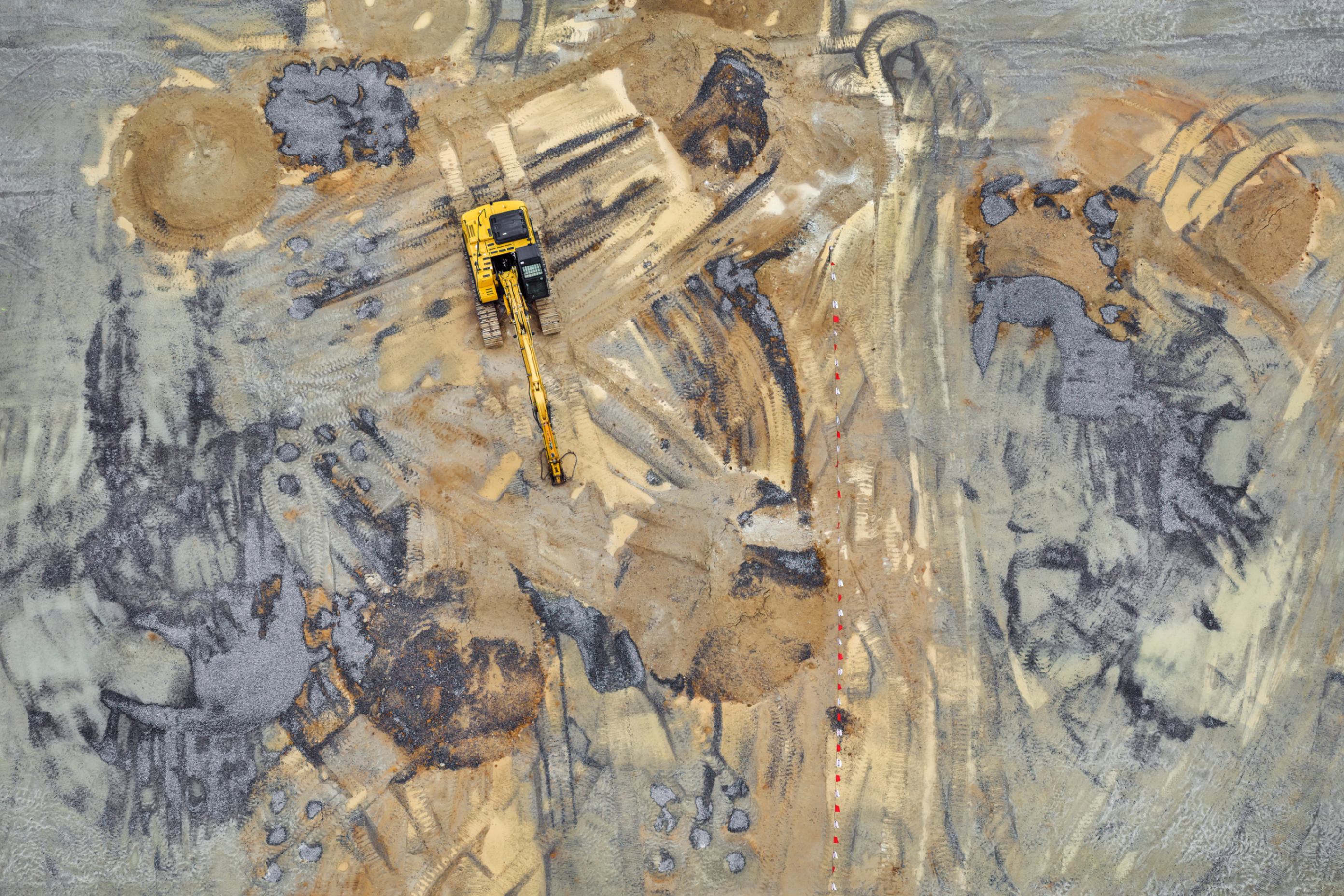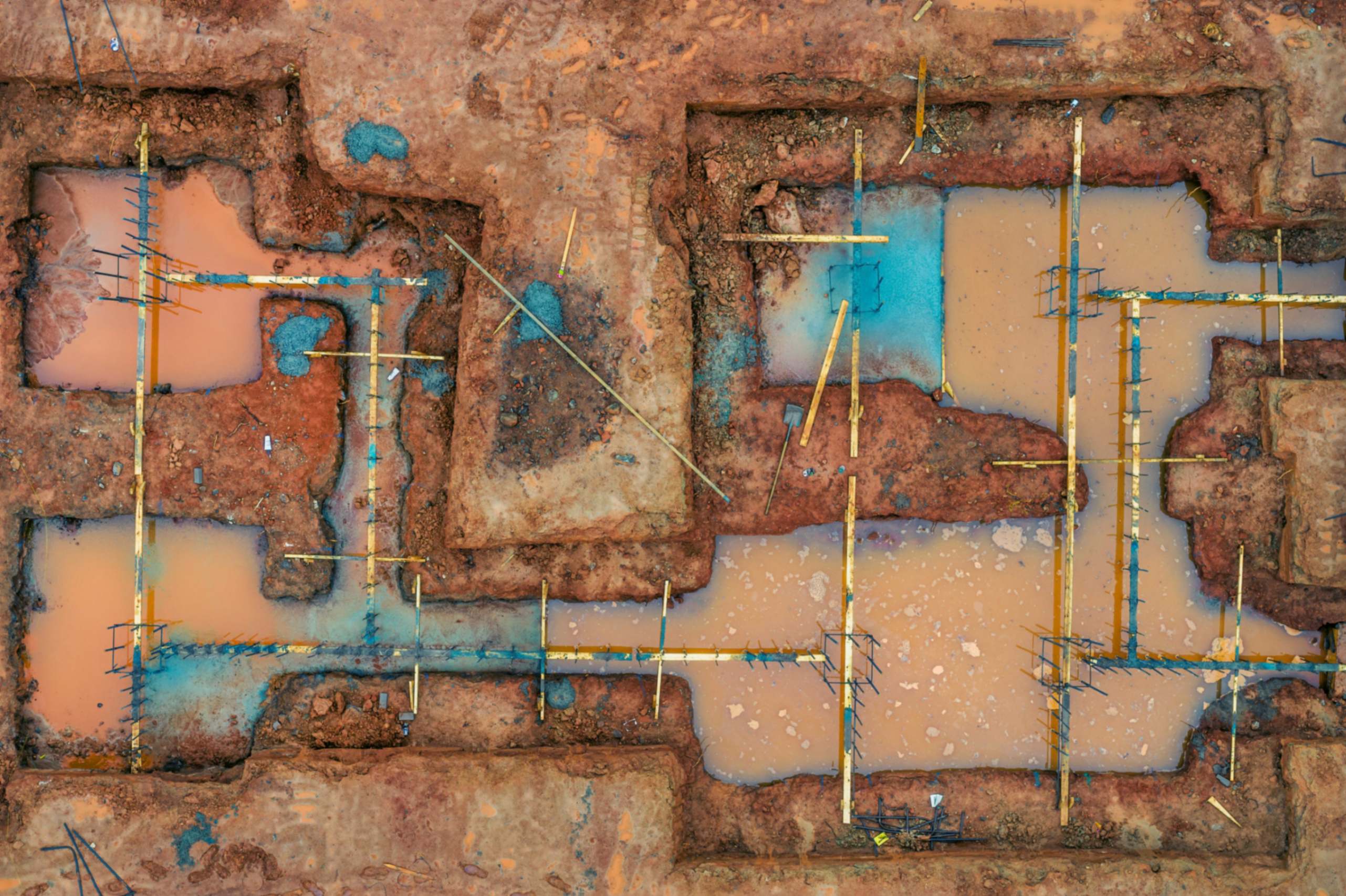Learning to Fly: An Artist Statement by Peter Essick

We could hardly wait to get up in the morning.
-Wilbur Wright
That’s something that tends to happen with new technologies generally: The most interesting applications turn up on a battlefield, or in a gallery.
-William Gibson
A few minutes before sunrise I unload my drone from the back of my car in the parking lot of an industrial park. I power up and check all the instrument readings on the remote control. Batteries 100%, 14 satellites engaged, 4 bars on the wireless connection, ready to fly. I am in full pilot mode as I launch my DJI drone and climb it to a few hundred feet.
Across the road, construction workers are standing next to a line of dump trucks and earth movers. The site is being graded in preparation for the building of a huge warehouse. For the next 15 minutes, I am focused on flying over the site and photographing the work in progress.

Photography has a history of documenting everyday life. In my neighborhood in Atlanta, construction activity is an everyday occurrence. It wasn’t until I started flying a drone that I realized that construction sites offered so many different visual perspectives. The textures and colors of human-altered landscapes are endlessly fascinating. There is a sense of freedom to be able to see and photograph this landscape from the viewpoint of a drone flying over a site.
I find it hard to explain my deeper motives for photographing construction sites. On a personal level, I enjoy the unique challenge of capturing an ever-changing landscape. Construction sites change by the day and the light and exposure are never the same, so there is always a sense of joy in capturing the perfect moment. The elements of soil, wood, steel, and concrete relate to each other in infinite varieties of order and disorder. The surface reflections can create altering moods and various meanings. I enjoy capturing it all.

I am also trying to document the environmental impacts of construction, land use, and suburban sprawl. Construction and development have undeniable negative impacts including the elimination of tree cover and loss of habitat for wildlife. More pavement heats up the city and exacerbates global warming. Sprawl is a major contributor to a poor quality of life with many detrimental health effects resulting from a sedentary lifestyle. All this development is happening on traditional lands of the Muscogee people who were forcibly removed from the region two centuries ago. While I am using my drone for photography, drones have been and continue to be used as weapons of war as well. I try to understand these issues and incorporate them into my own personal photographic practice.
As my drone batteries runs low it is time to land. I feel a sense of accomplishment in being able to do creative work this close to home. I love the freedom to fly and the chance to share my vision of a human-altered landscape.
-Peter Essick
